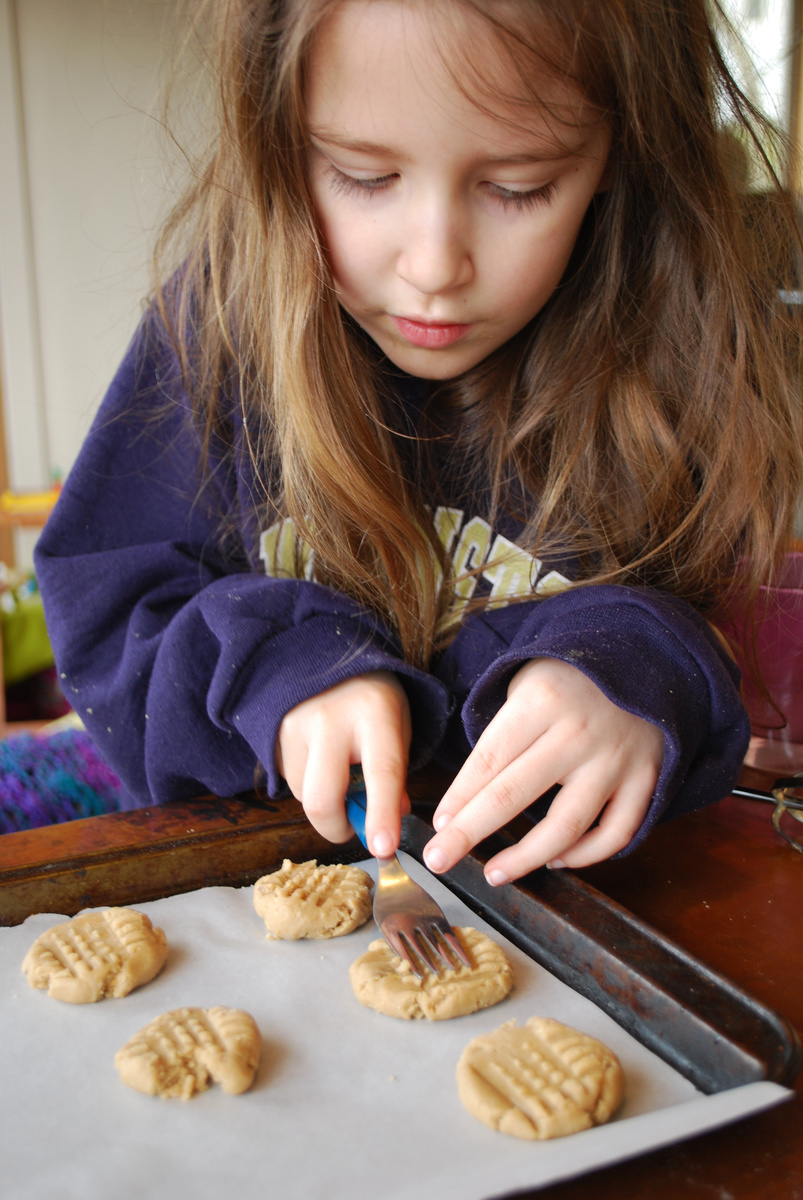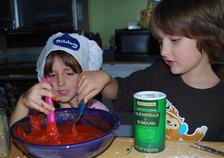Blog
Cooking With Kids - A Recipe For Happiness!
Cooking with our kids is one of the best tools we have as parents against the rising tide of obesity, and to prevent our children becoming part of the 48 million who get sick from food poisoning every year. Children are naturally curious and it is important to harness this curiosity positively. What then are some of the rules to follow and where should you start when you bring children into the kitchen?
Safety first with children
Baby steps are the way to go when introducing kids to the kitchen. Sharp knives, hot fat or pressure cookers should be avoided in the beginning. The kitchen has the potential to be a very dangerous place for anyone so before starting to teach anything about cookery it is vital to set ground rules. Food hygiene is the perfect place to start. For the youngest of children, this simply means reminding them to always wash their hands. As children get older you can build upon this, explaining why you do it and eventually introducing food storage and prevention of cross-contamination into the mix.
Introducing rules around hot and sharp things need to come next. The very young need only to know what to avoid and it is your responsibility to keep them safe (keep them away from oven doors, keep pot handles tucked in and not overhanging, and keep sharp knives out of reach). As children get older they can be introduced into chopping, stirring and eventually frying first by helping you, and then by doing it for themselves.
Excite and inspire in advance
Engagement is key when teaching children anything. Meal planning may seem a little dull to adults but for young children, it can be an amazing experience. This is their opportunity to make decisions for the family, decisions that impact everyone. Younger children may just want to pick a recipe from pictures but older ones will want to read the ingredients too. You can further engage your children by involving them in picking the ingredients from the shops. As they get older they can start by stirring and serving before moving onto chopping. By making cookery an exciting treat you avoid making it boring or a chore. Remember that a healthy relationship with food isn’t just about cooking but can include packed lunches and other snacks too.
Pick the right options to offer
There are many options for parents wanting to explore cooking with their children. The important thing initially is to keep things simple, healthy but tasty. Simple meals like salad jars, fruit kebabs or French bread pizza make great entry level options to start with. As you progress with your children it makes sense to pick meals that will teach them key skills. Stews, bolognese and many curries all start in much the same way with the browning of onions followed by frying meat. How long the onions fry for, what herbs and/or spices are added and what then gets added in will determine the final dish but the technique used is transferable. White sauces starting with roux, basic bread dough and gravies can all be adapted to make a wide range of dishes. Once children have a few basic skills under their belts you can cut them loose to experiment with their own ideas.
Cooking with kids is great fun but there are a few things to bear in mind. Every time you are in the kitchen it is a teaching opportunity. From food safety to cooking techniques you can teach your children how to love food through carefully chosen meals and activities. Only by keeping children engaged and happy with cooking can you be sure to keep them interested and ensure a healthy future.
Safety first with children
Baby steps are the way to go when introducing kids to the kitchen. Sharp knives, hot fat or pressure cookers should be avoided in the beginning. The kitchen has the potential to be a very dangerous place for anyone so before starting to teach anything about cookery it is vital to set ground rules. Food hygiene is the perfect place to start. For the youngest of children, this simply means reminding them to always wash their hands. As children get older you can build upon this, explaining why you do it and eventually introducing food storage and prevention of cross-contamination into the mix.
Introducing rules around hot and sharp things need to come next. The very young need only to know what to avoid and it is your responsibility to keep them safe (keep them away from oven doors, keep pot handles tucked in and not overhanging, and keep sharp knives out of reach). As children get older they can be introduced into chopping, stirring and eventually frying first by helping you, and then by doing it for themselves.
Excite and inspire in advance
Engagement is key when teaching children anything. Meal planning may seem a little dull to adults but for young children, it can be an amazing experience. This is their opportunity to make decisions for the family, decisions that impact everyone. Younger children may just want to pick a recipe from pictures but older ones will want to read the ingredients too. You can further engage your children by involving them in picking the ingredients from the shops. As they get older they can start by stirring and serving before moving onto chopping. By making cookery an exciting treat you avoid making it boring or a chore. Remember that a healthy relationship with food isn’t just about cooking but can include packed lunches and other snacks too.
Pick the right options to offer
There are many options for parents wanting to explore cooking with their children. The important thing initially is to keep things simple, healthy but tasty. Simple meals like salad jars, fruit kebabs or French bread pizza make great entry level options to start with. As you progress with your children it makes sense to pick meals that will teach them key skills. Stews, bolognese and many curries all start in much the same way with the browning of onions followed by frying meat. How long the onions fry for, what herbs and/or spices are added and what then gets added in will determine the final dish but the technique used is transferable. White sauces starting with roux, basic bread dough and gravies can all be adapted to make a wide range of dishes. Once children have a few basic skills under their belts you can cut them loose to experiment with their own ideas.
Cooking with kids is great fun but there are a few things to bear in mind. Every time you are in the kitchen it is a teaching opportunity. From food safety to cooking techniques you can teach your children how to love food through carefully chosen meals and activities. Only by keeping children engaged and happy with cooking can you be sure to keep them interested and ensure a healthy future.









Comments